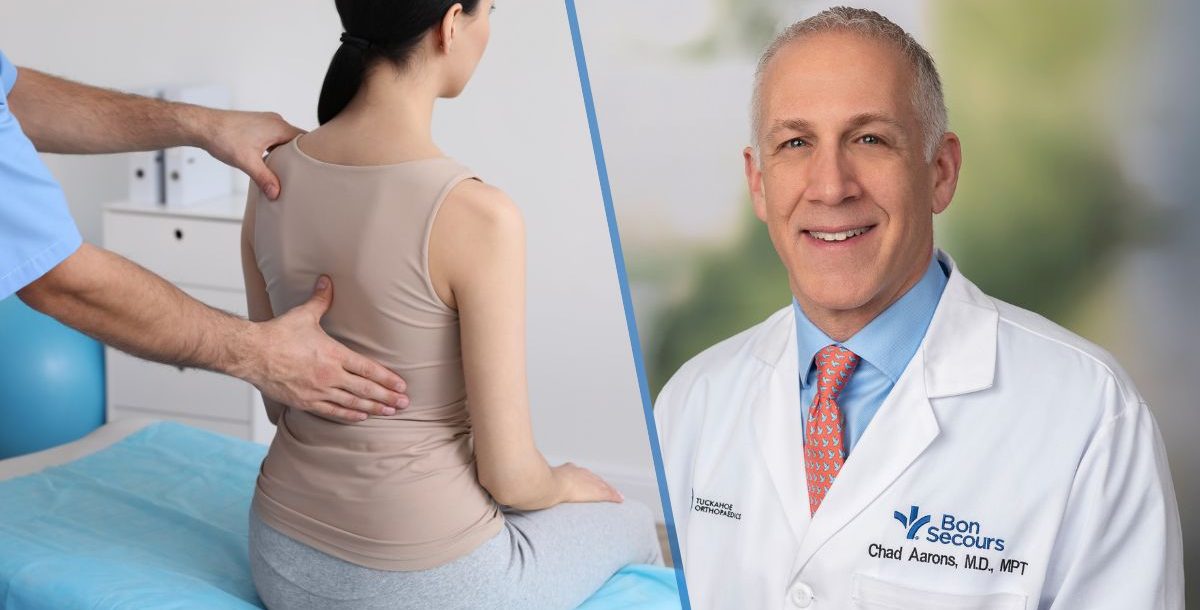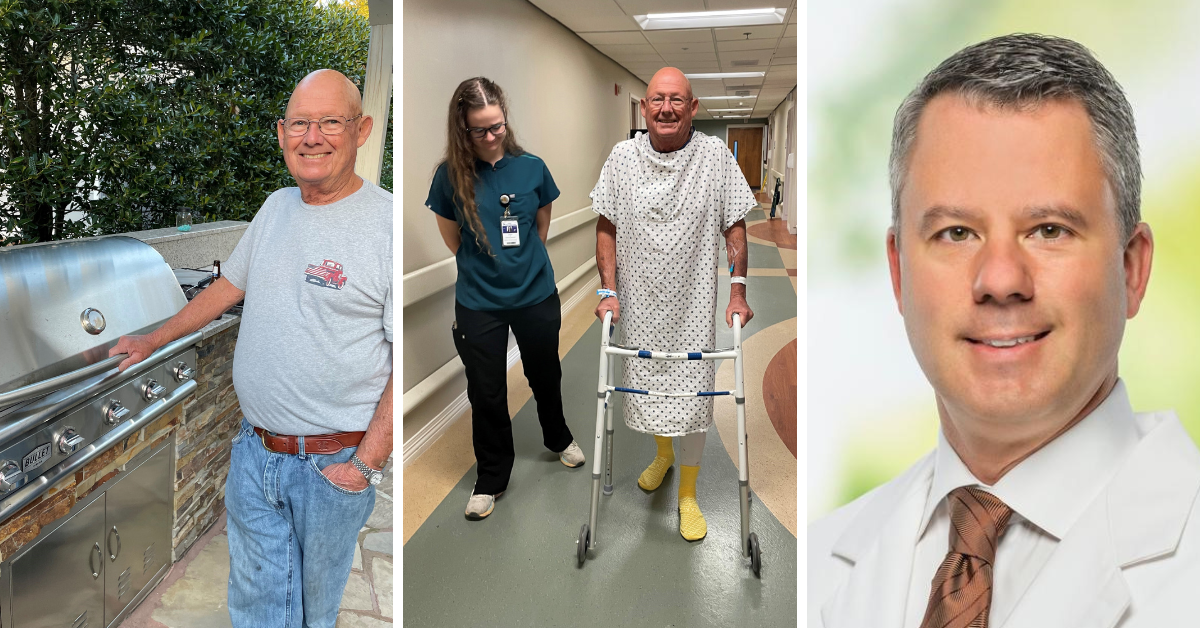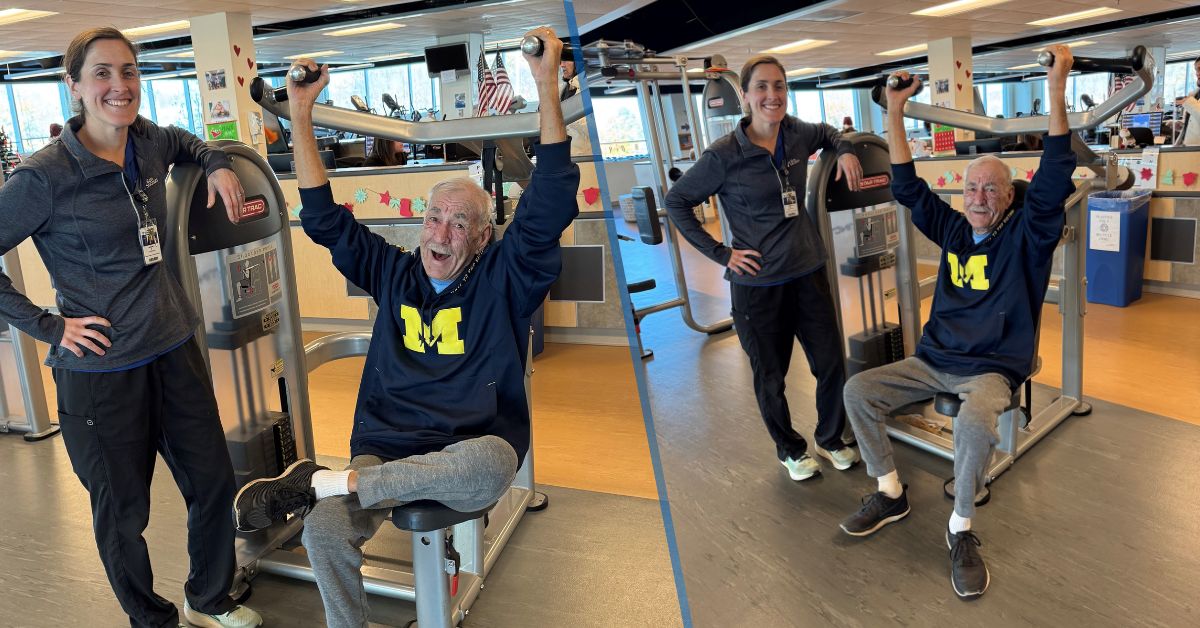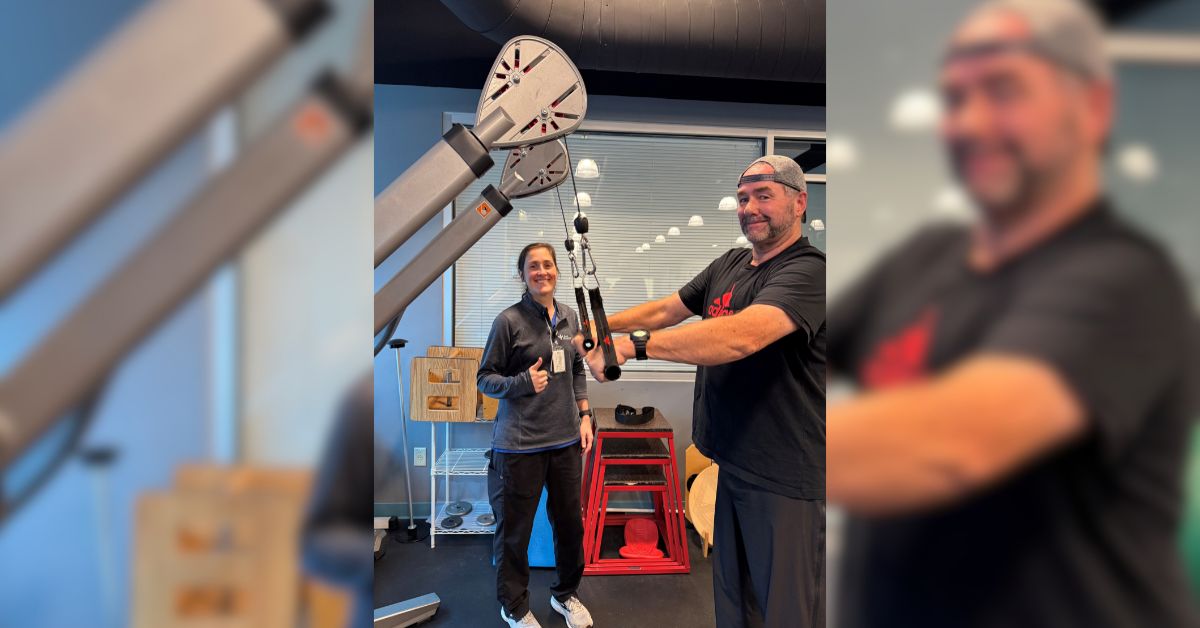The following piece was written by Chad Aarons, MD, MPT, an orthopedic surgeon and specialist at Bon Secours – Tuckahoe Orthopedics.
What is scoliosis?
What is scoliosis is a frequently asked question by patients and parents that I see. Scoliosis is an abnormal curvature of the spine. This abnormal curvature is not just a side-to-side curve like a snake but more of a three-dimensional curve involving a twist, like a spiral staircase.
This curve occurs for one of three reasons:
- Congenital scoliosis is due to an abnormal shape or development of the bone (vertebra) itself. These can be incompletely formed or abnormally fused.
- Idiopathic scoliosis means the bones are normal, but the twist occurs for reasons we don’t understand. Most scoliosis seen (about 65 percent) is considered idiopathic.
- Neuromuscular scoliosis is a type of scoliosis associated with muscular problems, such as spina bifida, muscular dystrophy and spinal cord injury.
How do you know if you or your child has scoliosis?
Usually, most people become aware of a curvature in their spine because of screening exams done at school or during yearly physicals. These involve having the patient bend forward and looking for any raised area in the back. Because scoliosis is a combination of a twist and a curve, the back on the side of the curve will be pushed up higher than the other side. This can be seen in the forward bending test.
Once someone is thought to have a curve, they are usually sent for an X-ray. This is the only way to truly tell if a curve exists. A person is said to have scoliosis if an X-ray shows a curve of more than 10 degrees.
This imaging will be done by your doctor to see if a curve exists and, if so, how big it is. Most people with scoliosis will have no pain and will not even know they have a curve. Sometimes they may notice that their hips or shoulders are different levels when getting changed or when wearing a bathing suit.
What can be done to treat scoliosis?
Depending on how much of a curve there is and how much growth the person has left determines what we will recommend for treatment. Scoliosis gets worse as you grow and because of that, younger children are treated more aggressively than those who are getting close to being done growing.
For a growing child who is between 10 and 25 degrees, we watch them over a period of time to see if their curve gets worse.
For children with curves more than 25 degrees but less than 50 degrees and with a lot of growing left, we usually use a brace. This brace does not correct the curve that is already there but prevents it from getting worse.
For people with curves more than 50 degrees, we recommend surgery to prevent the curve from getting worse, even after the child stops growing. This surgery makes the spine straighter and allows the curve to be fixed in one position. The surgery can be done from the front, the back or both and usually involves putting screws, rods and hooks in the spine.
How we can help
If you are asking yourself, “What is scoliosis?” or think you or your child may have scoliosis, reach out to your primary care provider. They can refer you to an orthopedic specialist, who can review treatment options with you based on your individual case.
Learn more about the orthopedic and sports medicine services we offer at Bon Secours.





